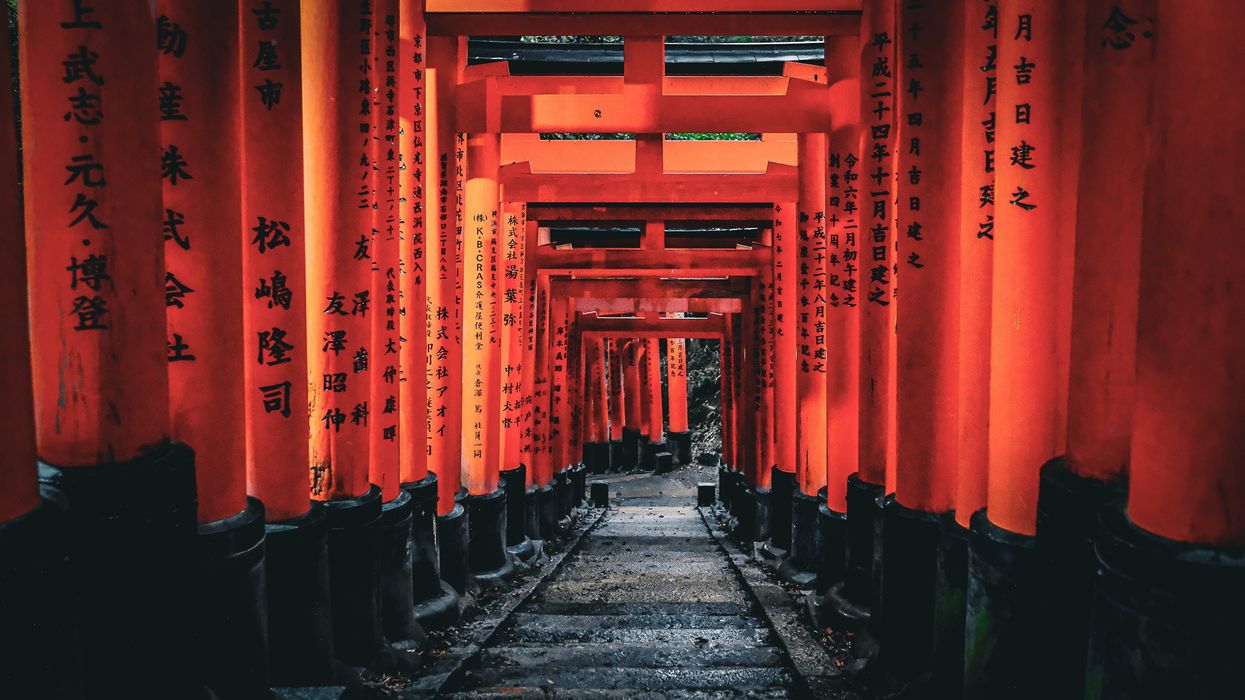
Peter Gietl

From the neon poetry of Tokyo to snow monkeys in silent cedar forests, one traveler finds a nation that marries ritual with reinvention—and guards its soul with quiet pride.
When you land in a new country, there’s a particular kind of static energy in the air, a sensory jolt of foreign vowels, unfamiliar smells, and the thrill of not knowing exactly what’s coming. For the incurably curious, it’s a high. This time, I arrive in Tokyo with my wife, six months pregnant and radiant, which means our days of darting through cities at warp speed are on pause. But I welcome the shift—two weeks of slow exploration, good food, and a different rhythm.
We begin, as all smart arrivals in Tokyo should, by shedding our luggage and stepping into the crisp evening. Down a narrow alley lit by the soft hum of lanterns, I sense something odd—not wrong, just... unfamiliar. Then I see it: a long row of bicycles, maybe fifty of them. Sleek road bikes, e-bikes, vintage cruisers. All parked casually against the wall. Not a single one locked.
In any American city, this would be madness. Here, it’s just Tuesday.
For Americans looking eastward, Japan offers a compelling paradox: a society that embraces innovation while steadfastly preserving the elegance of its cultural soul.
I check my phone. Sure enough, bike theft in Japan is astonishingly rare. Throughout our trip, I spot maybe three locks total, each flimsy enough to be snipped with kitchen scissors. It’s disorienting. A glimpse of what urban life could be if trust hadn’t eroded. If modernity hadn’t meant runaway paranoia and immigration. Somehow, in a city of 40 million, Tokyo has solved the problem we all stopped trying to fix: how to live among strangers.
Tokyo is the quintessence of modern Japan. Once a sleepy fishing village called Edo, it became the shogun’s stage and then the emperor’s jewel. After being bombed to rubble, it was reborn in neon, now standing as a gleaming megacity of sushi, skyscrapers, and Shibuya chaos. Its samurai tradition collides with Blade Runner cool—always reinventing, never sleeping.
Shibuya Crossing is less an intersection than a theater, where Tokyo’s endlessly chic, chaotically elegant dance unfolds every two minutes. Beneath towering video screens and the glow of luxury ads, thousands glide past one another in perfect, unscripted choreography. It’s Fellini with Wi-Fi—a place where anonymity looks impossibly glamorous.
Viewed from the top of Tokyo Tower, the city stretches like an infinite abyss of concrete. It’s as if someone dropped 20 of Dallas’s downtowns, commanding the skyline. It’s a colossus of luxury and exotic familiarity. Tokyo feels a touch like many contemporary cities, with stylish young people at cafes and salarymen racing to work. Hell, you can get the best pizza outside of Italy here. But everything is slightly tweaked in that distinctly Japanese way.
The metro is a modern marvel of design and practicality, allowing you to go almost anywhere in the city using clean and crime-free public transportation, where people are incredibly conscious of those around them. Wandering around the city, you find the serenity of a people unashamed of their culture. From the tiny handmade noodle joints to eight-seater bars where people smoke, drink, and have conversations while a bartender makes the most deliciously crafted cocktails you’ve ever had. I kept wondering how this place exists.
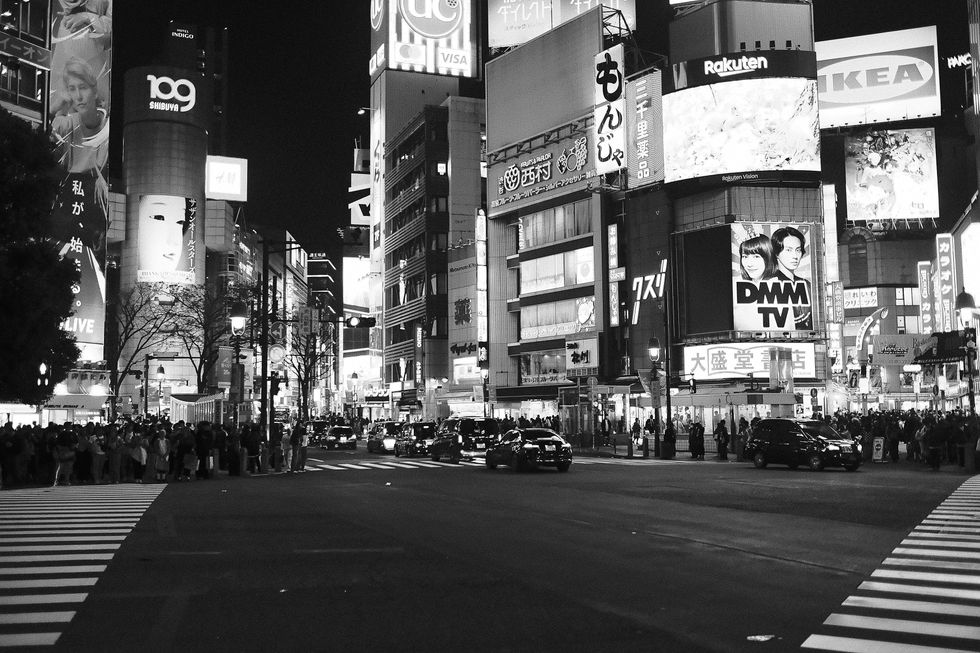
Japan’s history unfolds like a lacquered scroll—opulent, self-contained—then, suddenly, violently disrupted. Before I read a slew of books prior to visiting, I was painfully ignorant of that history, my knowledge being confined to World War II trivia. Their medieval history is like Game of Thrones on steroids. Figurehead emperors manipulated by conniving regents, samurai duels wielding ancient swords with names like “little crow,” clannish blood feuds, warrior monks, the original “Kamikaze” or divine wind typhoons sinking the entire Mongol invasion force... twice. The list is endless: have you heard the one about the crusade to conquer Korea led by crimson-clad Catholic samurai, ensuing in a fierce anti-Christian inquisition? Castles, knights, chivalry, and ghosts—it’s got everything, and it’s absolutely wild.
For over two centuries, from the early 1600s to the mid-1800s, the country locked its doors to the world. The Tokugawa shogunate, wary of foreign influence—particularly Christian missionaries—sealed the nation off under a policy called sakoku, or “closed country.” Christianity, once flirted with by daimyō (feudal lords) and even embraced by tens of thousands of converts, was outlawed and hunted. The crucifix became contraband. Converts were executed or forced to trample on images of Christ to prove their loyalty to the state.
Then came the second half of the 19th century, and with it, Commodore Perry’s black ships cutting through Edo Bay like a blade. The illusion of isolation shattered. Western powers, led by the Americans, demanded trade, and the old shogunate could no longer hold. What followed was not just change, but transformation. In 1868, the Meiji Restoration officially began, a velvet revolution that replaced samurai rule with imperial centralization. The teenaged Emperor Meiji, previously a cloistered figurehead, became the symbolic spearhead of modernization. Feudal fiefdoms were dissolved. Railroads, telegraphs, and Prussian-style parliaments sprang up seemingly overnight.
The Meiji era burned fast and bright, propelling Japan from feudal backwater to imperial power in mere decades. It adopted the dress, weapons, and bureaucracy of the West, but never its soul. The Japanese quickly realized they were about to be colonized like China or India, and went about trying to catch up. They sent tens of thousands of their brightest minds to learn every aspect of the modern age. Shipbuilding, gunsmithing, physics, mathematics, horology, smelting—literally, every aspect of knowledge that forms the basis of a society. In 40 years they went from being basically a medieval society to going to war with a European power (Russia) and defeating them. They had modern battleships that sank a large portion of the Russian fleet, when just 50 years before they only had small fishing vessels.
Christianity faded again into the background, a curiosity more than a creed. By the early 20th century, Shinto nationalism would rise to fill the vacuum, and the emperor’s divinity would become a rallying cry for conquest.
Still, the ghosts of those early converts remain hidden in villages, memorialized in Nagasaki, embedded in a national story that has always blended reverence for tradition with a talent for reinvention. One can’t help but question the wisdom of dropping an atomic bomb on a population center in Hiroshima that killed half the country’s Christians. (The term “war crime” springs to mind.) However, Japan rebounded from the war and the A-bombs, becoming an economic powerhouse in the second half of the 20th century. A shared cultural tradition of excellence, families, and honor can go a long way in overcoming destruction and the ills of postwar consensus.
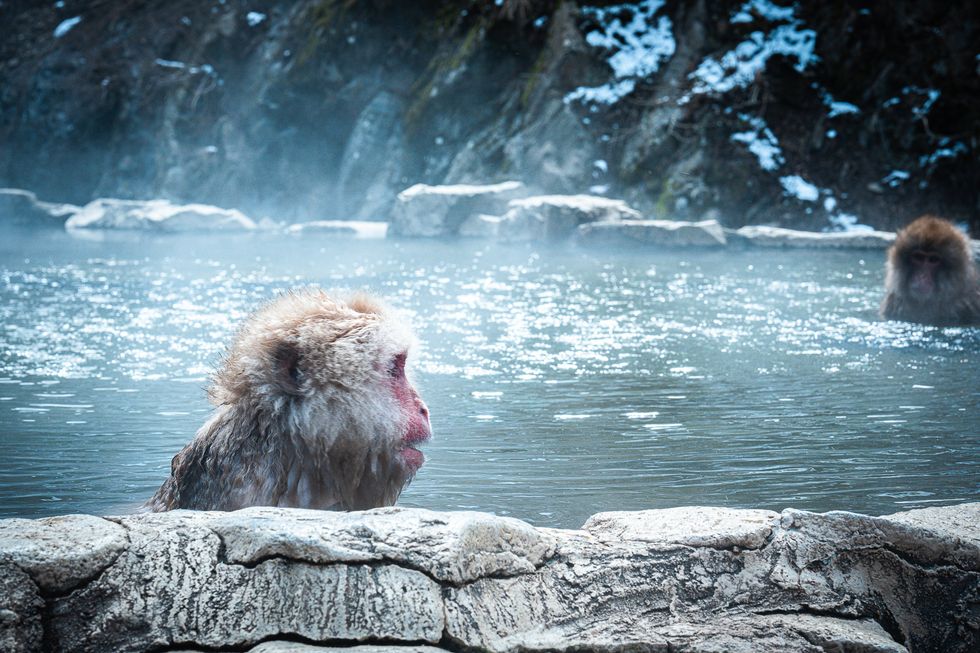
After the symphonic chaos of Tokyo—its pachinko parlors, its midnight neon, its choreographed stampede of morning commuters—we sought silence. Refuge. Something ancient and still. And so we climbed into the white-draped mountains of Nagano, toward the little onsen town of Yudanaka, where time slows, and soaks, and exhales.
The village clings to the slope like a dream half-remembered. At its center is Shibu Onsen, a thousand-year-old string of hot spring baths that steam like enchanted cauldrons in the spring air. We check into a minuscule ryokan—six rooms, no pretense—run by a beaming, birdlike old man who treats us like distant relatives rather than guests. Tatami mats. Thin futons. Robes tied with practiced care. The scent of cedar and green tea. And the bath. Scalding and perfect, cut into stone and hidden from the world. We sit in silence, limbs floating like ghosts, the chaos melting from our bones as the snow falls softly around us. It feels like being forgiven.
In the morning, our host hands us mud boots and drives us up a narrow road that disappears into the cedars. A brief hike through the hush of snow-laced forest leads us to the famous Jigokudani Monkey Park. And there they are: Japan’s most dignified residents. Hundreds of macaques—wild, shaggy, astonishingly civilized—soaking in the same kind of onsen we’d just left. They lounge, they flirt, they jockey for position, all according to an invisible hierarchy that would put most country clubs to shame. They wait their turn. Even the monkeys in Japan queue with grace.
That night, still half-floating in our own mineral-slicked serenity, we walk past a wooden bathhouse glowing in the lantern light—built in the 1700s and rumored to have inspired Spirited Away, Miyazaki’s fever dream of a film. We dine at a postage stamp-sized omakase run by a husband-and-wife duo who look like they stepped out of a Murakami novel. The meal is whatever they feel like cooking: soba tangled with mountain greens, glistening river fish prepared with reverence, tiny bowls of pickled things that taste like memory.
As the proprietors smoke and refill my whisky, they are delighted to learn we’re from Texas. “Ah, John Wayne very good, Texas very good,” as the chef lights my cigarette and imitates the bang bang bang of six-shooters. The entire meal is $25. It is not luxury. It is not curated. It is something better—unpolished, ancient, and quietly divine. A reminder that sometimes the soul doesn’t need more. It needs less. Plus, maybe a hot bath.
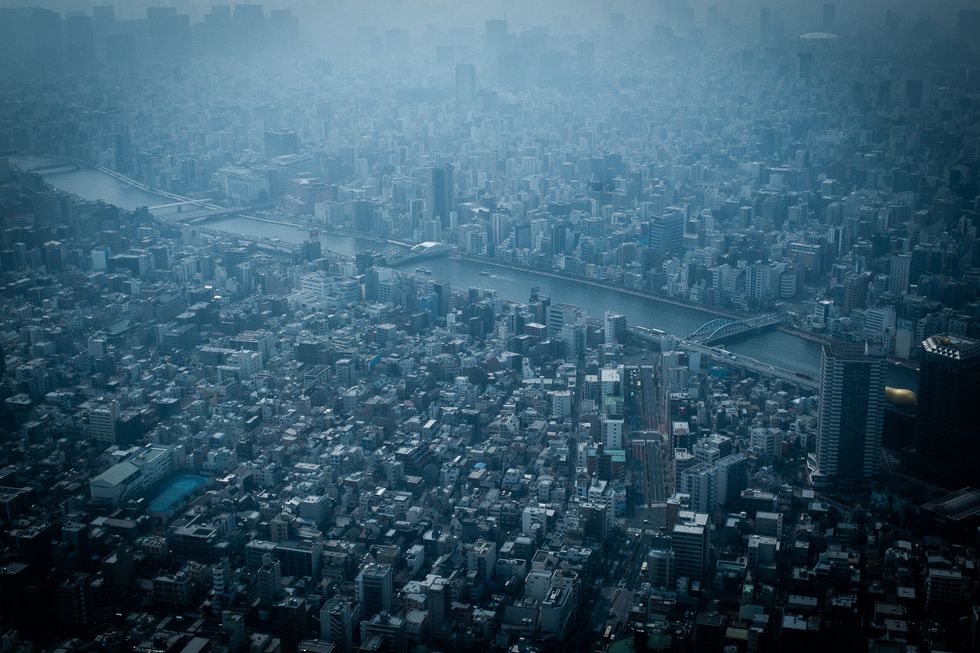
Japanese cuisine is less a national diet than a philosophy—a reverence for season, precision, and restraint. It’s a culinary world built on the idea that nature doesn’t need to be improved, only honored. A single piece of tuna, brushed with soy and laid gently over vinegared rice, can feel more profound than a French tasting menu. The vegetables taste like they remembered how to be vegetables. The egg yolks are orange. The strawberries are operatic.
At the center of it all is shun—seasonality not as trend, but as gospel. Chefs plan menus around the briefest harvest windows. Chestnuts for a few weeks in autumn. Bamboo shoots in spring. Even McDonald’s changes with the calendar.
Food is not just fuel in Japan, it’s ceremony. Even convenience store fare is shockingly edible, sometimes better than a bistro in Brooklyn. The standard is simply higher, because the baseline assumption is that food should taste good, be good, and look good, too. I started many days at 7/11 with absolutely delicious egg salad sandwiches.
This begins at the farm. Japanese agriculture is the antithesis of American industrial farming. Instead of endless monoculture fields, you get a patchwork of small, intensely cultivated plots and family-run operations of rice paddies. There’s pride in the labor, often passed down through generations, and it shows. Wagyu beef, raised with care, is tracked and revered. Even something as humble as a daikon radish is cultivated with such attention that biting into it feels like an apology to every sad salad bar you’ve ever encountered.
The difference isn’t just aesthetic, it’s systemic. Japan subsidizes quality, not quantity. It doesn’t drown its crops in glyphosate or stuff its livestock with growth hormones. American agriculture, by contrast, is built on scale, efficiency, and chemical shortcuts. It feeds the world, yes—but at a cost: depleted soil, anonymous produce, and meat that tastes of little but GMO corn and antibiotics.
In Japan, food is not outsourced to mega-farms or lab-grown future-tech. It is grown, caught, fermented, sliced, and served by people who believe that beauty and integrity matter. It’s not a trend. It’s a cultural ethic—one bite at a time. You feel that attention to detail in almost every restaurant, whether hole-in-the-wall or fine dining, you duck into. There is a pride in craftsmanship that inhabits almost everything the Japanese do. Returning to the US, the bland food tasted like poison. The cuisine is perhaps the highest Japanese accomplishment; however, they never cease to surprise by taking even the most American of pastimes and making it their own.
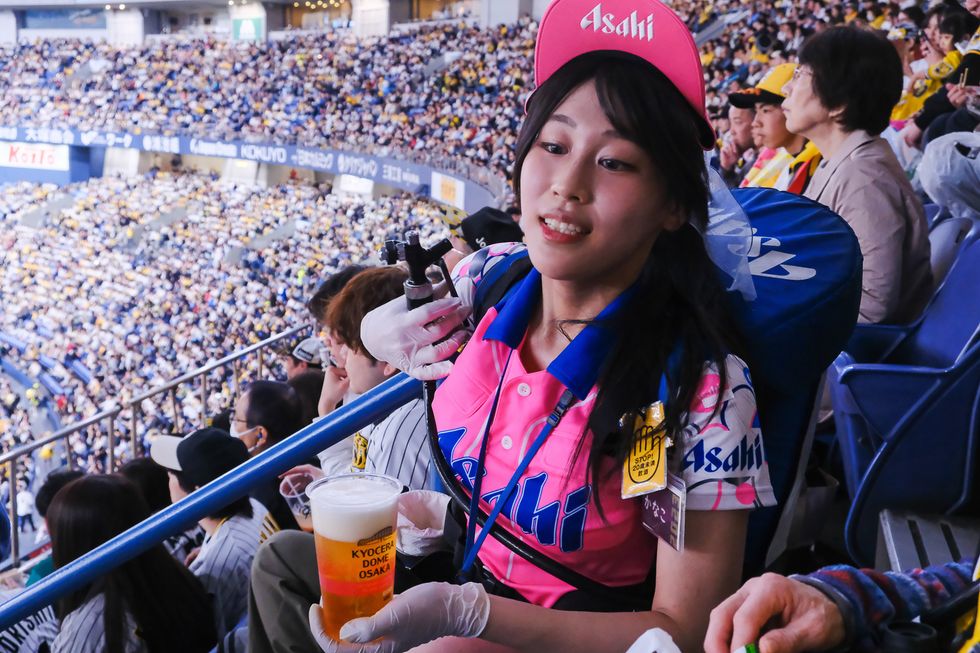
Japanese baseball is less a sport than a national obsession. Imported from America in the 1870s by teachers and diplomats, the game quickly shed its foreignness and became something entirely Japanese—rigid, precise, and achingly sincere. By the time Babe Ruth barnstormed through Tokyo in 1934, tens of thousands packed into stadiums to watch the Sultan of Swat.
My wife and I decided to take a day trip to Osaka to see a game up close. It’s a magical experience beyond any sporting event I’ve been to in the States. The crowd is restrained yet raucous, shouting chants and songs for each player and inning. The beer—roughly 75 cents a pop—is served by attractive, 20-ish women carrying mini kegs. The home team lost but, as we wandered back to the subway with the dejected fans, I couldn’t help thinking that I had experienced something pure, something beyond the crass money grabs and spoiled athletes and greedy owners, that America lost long ago. Why this island has persisted against modernity’s chaos is harder to pin down.
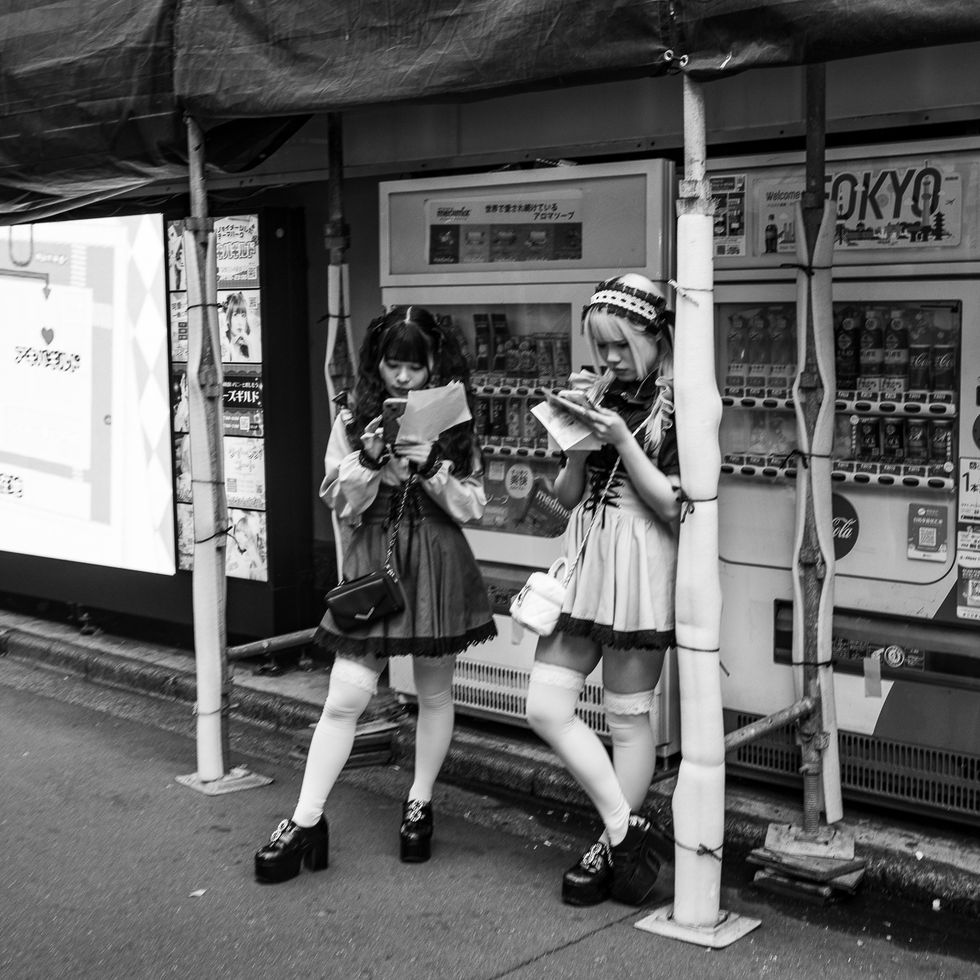
Japan’s government is a quiet contradiction—a system cloaked in modern democracy yet animated by something much older and more opaque. On paper, it’s a constitutional monarchy. But look closer—past the ceremonial bows, the immaculate press conferences, and the nearly unbroken postwar rule of the Liberal Democratic Party, neither liberal nor democratic—and a different story emerges. Japan is not entirely a democracy in the Western sense; it resembles a managed consensus machine, finely tuned to avoid disruption at all costs.
The same party has held power almost continuously since 1955, thanks not to mass repression or authoritarianism but to a web of patronage, rural vote-weighting, and a deep cultural aversion to political instability. Elections are held, yes, but policy is seldom transformed. True power resides with the bureaucracy: an elite group of technocrats who glide from Tokyo University into ministries where they quietly draft legislation, negotiate trade deals, and administer policy behind the scenes.
Even the free market isn’t quite free here. Japan Inc.—that storied alliance between government and industry—still persists beneath a polished surface of deregulation. The
Ministry of Economy, Trade and Industry (METI), a bureaucratic powerhouse, quietly shapes industrial strategy, picks winners, and cushions the fall of losers. Giant corporations maintain lifetime employment systems, not because they’re profitable but because shedding workers en masse would be socially ruinous. Capitalism is tolerated—but only when it serves harmony.
This is not the raucous, adversarial model of American democracy, nor the hyper-individualist chaos of free-market capitalism. It is order above all—order polished to a mirror shine. They have an intrinsic distrust of stock markets, which is why the majority of their largest corporations aren’t for sale on the open market. They would rather maintain jobs for their citizens and keep out foreign competition than make the GDP chart go up a point or two. Considering they are the second-wealthiest country on earth with a high median standard of living, it’s hard to argue with the results.
In Japan, stability isn’t the byproduct of politics—it’s the purpose. And that, perhaps, is the secret: democracy here is not about change. It’s about preserving what works, and concealing what doesn’t, with exquisite grace.

In an era marked by rapid acceleration and digital chaos, Japan remains something of an enigma—a nation both at the vanguard of technology and in quiet defiance of globalization’s demands. For Americans looking eastward, Japan offers a compelling paradox: a society that embraces innovation while steadfastly preserving the elegance of its cultural soul.
Japan, of course, is not without its own looming specters. A shrinking population, an aging workforce, and the weighty logistics of elder care have long been cast as existential threats. But these headlines, echoed with apocalyptic flair, remind me of the people harping on about global warming. Would Japan truly cease to be if its population dipped from 127 million to 100 million by 2070? It’s a forecast that, viewed through the lens of artificial intelligence and automation, feels increasingly outdated. After all, necessity—especially in Japan—has always been the mother of precision and quiet reinvention.
At the heart of the Japanese ethos is wabi-sabi, the poetic embrace of imperfection, impermanence, and incompleteness. It is the celebration of the cracked teacup, the faded silk, the quiet dignity of age. This concept, alien to much of the Western mind, calls for a recalibration of what beauty even means. In a society that often discards the old in pursuit of the new, wabi-sabi is radical in its restraint.
Japan is not in the business of sacrificing its cultural coherence for short-term economic gain. It has, pointedly, resisted the mass importation of cheap labor to boost GDP figures. It’s a refusal not born of arrogance but of reverence for language, ritual, continuity. It is the quiet understanding that some things are worth preserving even at the cost of scale.
This, perhaps, is where America might take note. In a nation obsessed with perpetual growth, Japan reminds us that there is strength in stillness, and wisdom in choosing what not to change.
Peter Gietl is the managing editor of Frontier and Return. He lives in Texas.